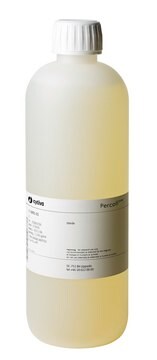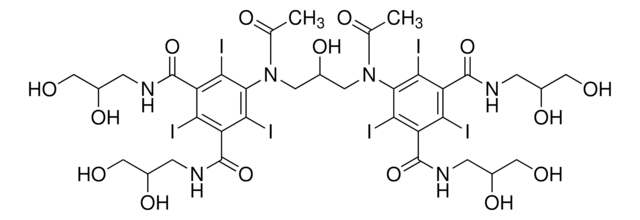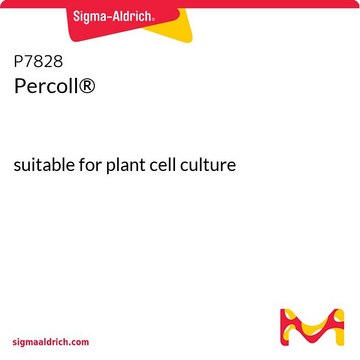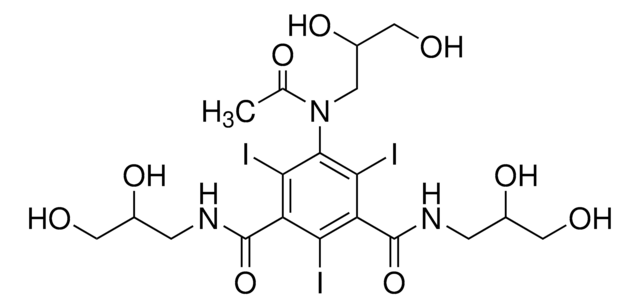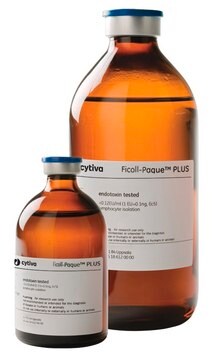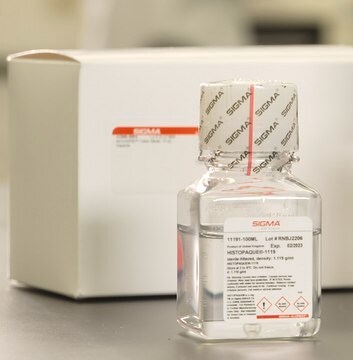Key Documents
P4937
Percoll®
pH 8.5-9.5 (25 °C), suitable for cell culture
Synonim(y):
Density gradient medium
About This Item
Polecane produkty
sterylność
aseptically filled
Poziom jakości
metody
cell culture | mammalian: suitable
single cell analysis: suitable
pH
8.5-9.5 (25 °C)
gęstość
1.13 g/mL±0.005 g/mL at 25 °C (lit.)
temp. przechowywania
2-8°C
Szukasz podobnych produktów? Odwiedź Przewodnik dotyczący porównywania produktów
Opis ogólny
Zastosowanie
- neonatal rat ventricular cardiomyocytes
- leucocytes from a blood sample
- peritubular myoid (PM) cells
Cechy i korzyści
- Low osmolality permits precise adjustment to physiological conditions without significant interference from the medium.
- Compatible with living cells and viruses and allows separation and recovery of intact, fully active systems.
- Impermeable to biological membranes, resulting in no change of buoyant density of particles during centrifugation.
- Spontaneous formation of gradient during centrifugation allows mixing of large sample volumes in the centrifuge tubes.
- Low viscosity results in rapid formation of gradients and particle separation.
- Most biological particles having sedimentation coefficient values greater than 60S can be successfully isolated in Percoll gradients.
Informacje prawne
produkt powiązany
Kod klasy składowania
12 - Non Combustible Liquids
Klasa zagrożenia wodnego (WGK)
nwg
Temperatura zapłonu (°F)
Not applicable
Temperatura zapłonu (°C)
Not applicable
Środki ochrony indywidualnej
Eyeshields, Gloves
Certyfikaty analizy (CoA)
Poszukaj Certyfikaty analizy (CoA), wpisując numer partii/serii produktów. Numery serii i partii można znaleźć na etykiecie produktu po słowach „seria” lub „partia”.
Masz już ten produkt?
Dokumenty związane z niedawno zakupionymi produktami zostały zamieszczone w Bibliotece dokumentów.
Klienci oglądali również te produkty
Protokoły
Aby przygotować gradient Percolla, osmolalność Percolla musi być dostosowana za pomocą soli fizjologicznej lub pożywki do hodowli komórkowej, aby Percoll był izotoniczny z fizjologicznymi roztworami soli.
Nasz zespół naukowców ma doświadczenie we wszystkich obszarach badań, w tym w naukach przyrodniczych, materiałoznawstwie, syntezie chemicznej, chromatografii, analityce i wielu innych dziedzinach.
Skontaktuj się z zespołem ds. pomocy technicznej
